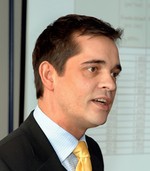
Wind power got another strong vote of confidence last week when the United Nations Environment Program (UNEP) and the Renewable Energy Policy Network (REN21) jointly issued reports saying supplies of new green electricity capacity should overtake fossil fuels later this year or in 2011.
The reports noted that in 2009, for the second year in a row, both Europe and the US added more power capacity from renewable sources such as wind and solar than conventional sources like coal, gas and nuclear. According to a press release, renewables accounted for 60% of newly installed capacity in Europe and more than 50% in the US.
“Globally, nearly 80 GW of renewable power capacity was added in 2009, including 31 GW of hydro and 48 GW of non-hydro capacity. This combined renewables figure is now closing in on the 83GW of fossil-fuel, thermal capacity installed in the same year,” the press release said.
“If the trend continues, then 2010 or 2011 could be the first year that new capacity added in low carbon power exceeds that in fossil-fuel stations.”
The press release said wind was even more dominant as a destination for investment in 2009 than 2008.
“In 2008, it accounted for $59 billion or 45 [%] of all financial investment in sustainable energy; in 2009, it accounted for $67 billion and its share rose to 56 [%].”
Wind power additions reached a record high of 38 GW last year, the release noted, adding the emissions-free generating technology now exists in more than 82 nations.
UNEP Executive Director Achim Steiner said 2009 was a year of resilience, frustration and determination for sustainable energy investment.
“Resilience to the financial downturn that was hitting all sectors of the global economy and frustration that, while the UN climate convention meeting in Copenhagen was not the big breakdown that might have occurred, neither was it the big breakthrough so many had hoped for,” the release quoted Steiner saying. “Yet there was determination on the part of many industry actors and governments, especially in rapidly developing economies, to transform the financial and economic crisis into an opportunity for greener growth.”
Mohamed El-Ashry, Chair of REN21, was quoted saying favorable policies in more than 100 nations played a critical role in the recent strength of global renewable energy investments recently. “For the upward trend of renewable energy growth to continue, policy efforts now need to be taken to the next level and encourage a massive scale up of renewable technologies.” El-Ashry said.
Do you think we’re about to reach a global green energy tipping point, where wind and other renewables will soon supply more new electricity than fossil fuels? Join in the discussion by commenting below.
 South Korea has confirmed it intends to become a major player in the offshore wind sector with an announcement last week that an $8.2 billion (€5.9 bn) wind farm will be built in the Yellow Sea.
South Korea has confirmed it intends to become a major player in the offshore wind sector with an announcement last week that an $8.2 billion (€5.9 bn) wind farm will be built in the Yellow Sea.






 Comments
Comments

